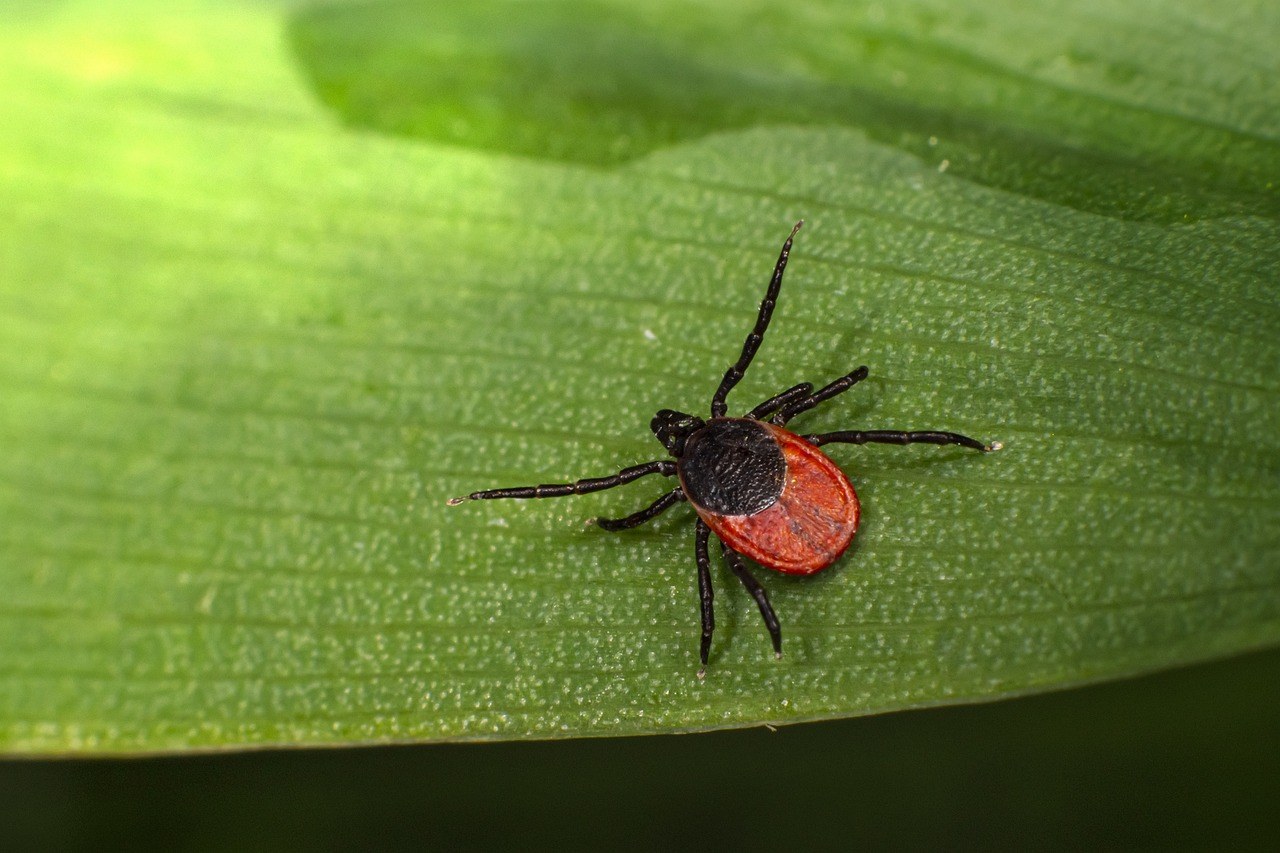Here’s a complete natural history overview of the Castor Bean Tick (Ixodes ricinus), one of the most widespread and medically important ticks in Europe:
Castor Bean Tick (Ixodes ricinus)
Taxonomy & Classification
- Kingdom: Animalia
- Phylum: Arthropoda
- Class: Arachnida
- Order: Ixodida
- Family: Ixodidae (Hard ticks)
- Genus: Ixodes
- Species: I. ricinus
- Common names: Castor Bean Tick, Sheep Tick, Deer Tick (Europe)
General Description
- Size:
- Unfed adults: 2–4 mm long.
- Engorged females: up to 11 mm.
- Shape & Color: Flattened, oval body. Brown to reddish-brown when unfed, greyish when engorged.
- Mouthparts: Long hypostome (feeding organ) with backward-pointing barbs, enabling firm attachment to host skin.
- Sexual dimorphism: Males smaller and darker; females larger with a reddish-brown scutum (shield).
Behavior & Lifestyle
- Questing: Ticks do not jump or fly but climb vegetation and extend forelegs to latch onto passing hosts.
- Feeding:
- Obligate blood-feeders at all life stages.
- Feeding takes several days, after which they drop off to molt or reproduce.
- Activity period: Most active in spring and autumn, especially in humid conditions.
- Longevity: Can survive months without feeding by conserving energy.
Life Cycle
- Type: Three-host tick (each stage feeds on a different host).
- Stages:
- Eggs – Laid in soil or leaf litter by engorged females.
- Larvae (6-legged, ~0.5 mm) – Feed mainly on small mammals and birds.
- Nymphs (8-legged, ~1.5 mm) – Feed on a wider range of hosts, including small mammals, birds, reptiles, and humans.
- Adults – Prefer larger mammals such as deer, dogs, livestock, and humans.
- Development time: 2–6 years, depending on climate and host availability.
Hosts
- Primary hosts: Small rodents, birds, deer, foxes, hedgehogs, livestock, dogs, and humans.
- Humans: Accidental hosts but important epidemiologically, as many pathogens are transmitted at this stage.
Habitat
- Moist, shaded environments such as:
- Woodland edges
- Grasslands
- Meadows with tall vegetation
- Gardens and urban parks with wildlife presence
- Sensitive to desiccation, so rarely found in open, dry habitats.
Geographic Range
- Widespread across Europe, parts of North Africa, and western Asia.
- Most abundant in temperate and humid climates with sufficient vegetation cover.
Medical Importance
Ixodes ricinus is the most important vector of human and animal tick-borne diseases in Europe:
- Lyme disease (Borrelia burgdorferi complex)
- Tick-borne encephalitis (TBE) virus
- Babesiosis (Babesia divergens, B. microti)
- Anaplasmosis (Anaplasma phagocytophilum)
- Rickettsiosis (Rickettsia helvetica)
- Can also cause local irritation, allergic reactions, or secondary infections at bite sites.
Ecological Role
- Parasite: Relies entirely on vertebrate blood meals.
- Disease vector: Central in maintaining and transmitting multiple zoonotic pathogens.
- Food source: Consumed by certain birds, ants, and predatory beetles, though predators rarely control populations effectively.
Conservation Status
- IUCN Red List: Not assessed (very common).
- Population trends: Expanding in range due to:
- Climate change (warmer winters extend activity season).
- Increasing deer populations (primary reproductive hosts).
- Land use changes creating more suitable habitats.
Interesting Facts
- Named “Castor Bean Tick” because an engorged female resembles a castor bean seed.
- Unlike some ticks, I. ricinus is extremely sensitive to desiccation, restricting it to humid habitats.
- Pathogens are usually transmitted after 12–24 hours of feeding, so early removal reduces infection risk.
- Plays a key role in Lyme disease ecology, linking rodents (reservoir hosts) with humans.
Visited 876 times, 3 visit(s) today
Views: 1322
Subscribe to the newsletter:
